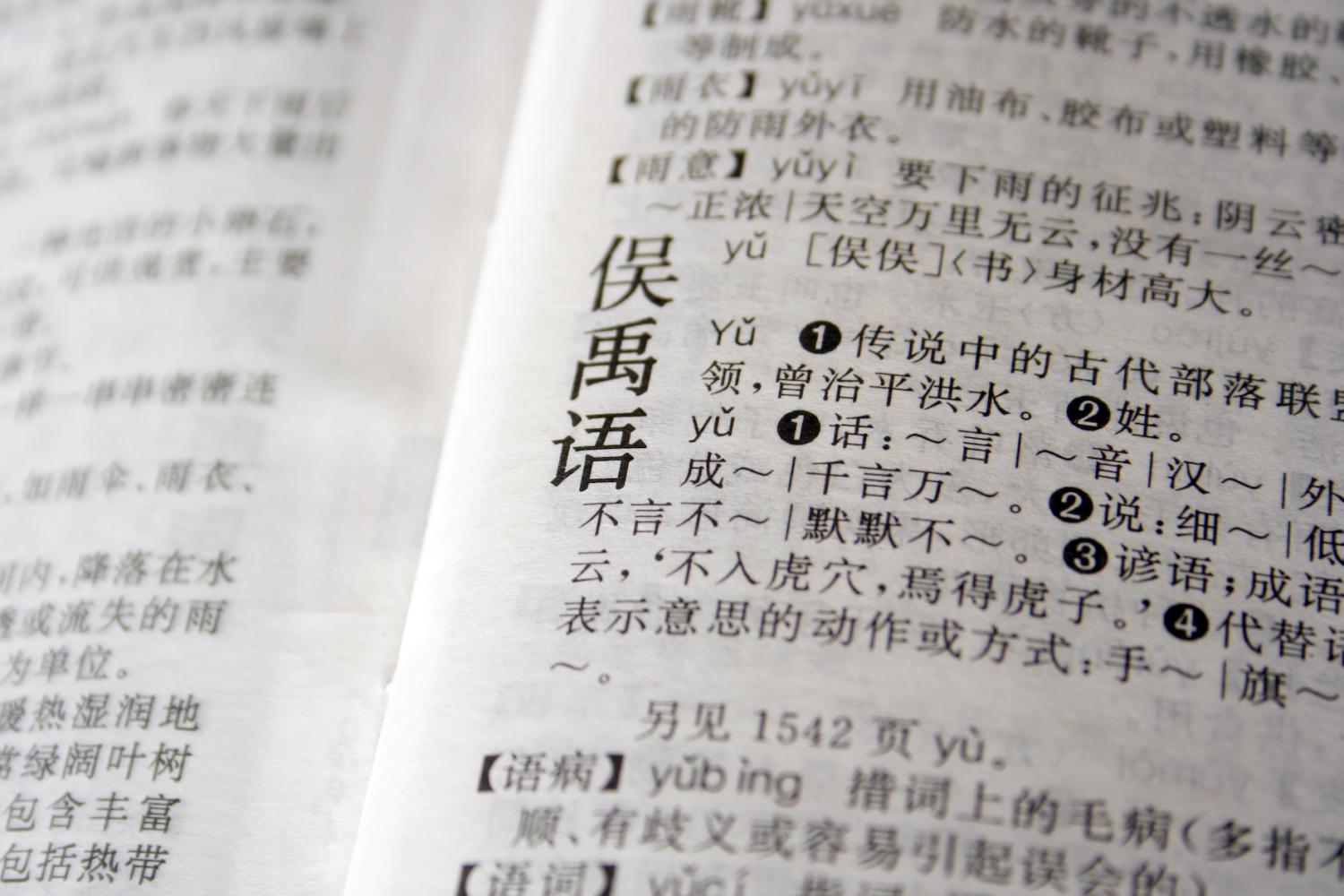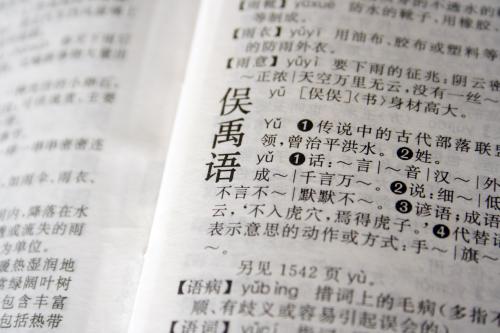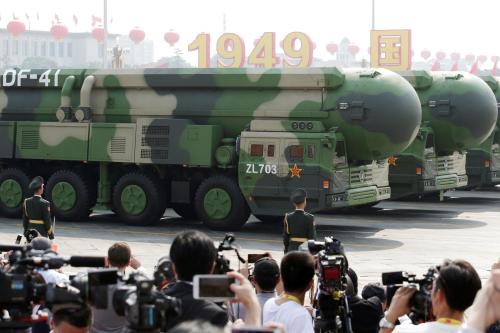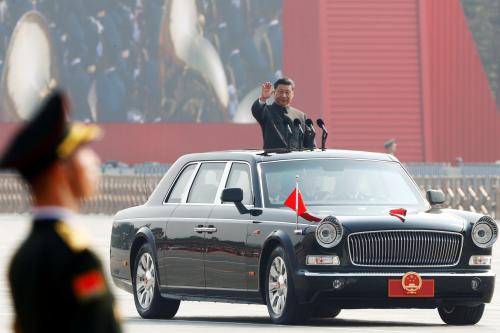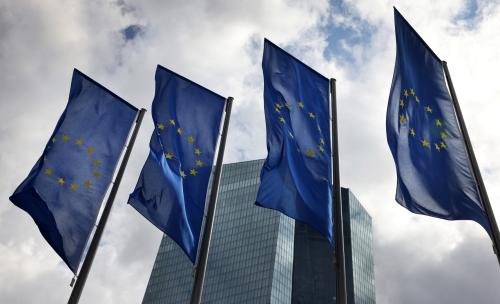This is the 11th essay of Global China’s “Lost in translation: Decoding Chinese strategic narratives” series. The full collection of essays can be found here.
The People’s Republic of China (PRC) and Russia share an obsession with history, an obsession played out in military parades. Both countries have a tradition of grand military parades, held in their national capitals on important dates. In Russia, the Victory Day parade in Red Square has become an annual event. In China, in addition to the National Day parade held on each 10th anniversary of the regime’s founding, President Xi Jinping decided, in 2015, to stage a September 3 parade to commemorate the 70th anniversary of “the victory of the Chinese people’s War of Resistance against Japanese Aggression and the victory of the global anti-fascist war” (中国人民抗日战争暨世界反法西斯战争胜利). Next week, exactly 10 years later, China is planning a second major parade in Beijing to commemorate the 80th anniversary.
Western observers tend to focus on the display of military hardware in Chinese and Russian parades. It is certainly true that China and Russia use these occasions to signal their current military capabilities. But they also feature imagery of the past. Russia regularly showcases World War II-era weaponry such as iconic T-34 tanks—the signature war machine that helped the Red Army to secure victory against Nazi Germany. China’s 2015 parade featured veterans pushing through Tiananmen Square.
Beyond martial splendor and visual reminders of these nations’ contributions to the war effort, the parades are part of an ongoing “memory war.” China and Russia are offering a preferred alternative history to the Western narrative of the Allied victory, a narrative that heavily features the U.S. and Western European roles. These efforts to “rightsize” World War II history have three goals. First, they aim to prove that China and the USSR were much greater contributors than commonly recognized—in terms of blood, especially—to the defeat of fascism. Second, they wish to draw attention to the early postwar Allied arrangements negotiated in Cairo and Potsdam that serve, in their views, as not just a legal but also a moral basis for their contemporary territorial and strategic interests. Third, they advance calls to “preserve the postwar international order” (维护战后国际秩序), contra the traditional Western interest in safeguarding a “liberal international order.”
Preferred memories
For Russia, commemorating the Soviet contribution to the victory in WWII is a reminder to international audiences of who, in Russian eyes, made the most significant contribution and the gravest sacrifice to the victory against fascism. It serves, implicitly and subtly, to suggest who was most deserving of the lion’s share, but was unjustly denied, the “rightful” fruits of victory. Of course, the Soviet Union’s historical role in WWII is controversial, even in a purely academic context. Russia uses a generous interpretation of the Soviet role in defeating fascism to bolster the assertion that it is entitled to a say in NATO and European Union expansion. Most notoriously, as the relationship between Russia and the West worsened from the 2000s to the 2010s, Russia’s post-Cold War mythmaking of what it calls the “Great Patriotic War,” championed by President Vladimir Putin himself, came into full relief in its use to justify the 2014 annexation of Crimea and the ongoing war with Ukraine.
The PRC has jumped onto this “memory war” wagon with its increasing attention to the commemoration of the victory over Japan that occurred not merely in the Pacific Theater but also in the land war fought in China proper. While the U.S. perspective marks Japan’s 1941 attack on Pearl Harbor as the beginning of its involvement in the conflict, China had already been fighting Japan for more than four years.1
It is important to recount a bit of diplomatic history. A key point of dispute between China and the West is disagreement over which World War II Allied documents are legitimate sources of international law with binding power. Three arrangements negotiated during and after the war contend as the foundations for the subsequent order: the Cairo Declaration (1943), the Potsdam Proclamation (1945), and the San Francisco Peace Treaty (1951). In Chinese writings, the Cairo Declaration and Potsdam Proclamation are treated as the more legitimate international law references, even though they were not war-ending treaties. In contrast, in the U.S. perspective, the 1951 San Francisco Peace Treaty is of superior legal effect.
The Cairo Declaration and the Potsdam Proclamation are of current strategic value for China in supporting its assertion of sovereignty over Taiwan, as well as in maritime disputes in the East and South China Seas. Explicit demands were made in both the Cairo and Potsdam documents that Taiwan be returned under Chinese sovereignty, together with other territories acquired by Japan through “violence and greed,” as it was put in the Cairo Declaration. According to the Chinese perspective, had the Potsdam Proclamation been interpreted stringently, Japan should be restricted to its four home islands plus “such minor islands as [the Allies, including China] determine.” This latter reference may or may not include the Diaoyu/Senkaku Islands.
However, as the Cold War opened and the threat of communism in Asia loomed, the United States had little interest in punishing Japan as harshly as implied in the Cairo and Potsdam arrangements. The 1951 San Francisco conference, held as the Korean War was being fought, led to a formal end to the war with, and Allied occupation of, Japan. The treaty superseded the terms agreed to in Cairo and Potsdam and watered down those commitments. Two aspects rankled Chinese leaders, then and now. First, the San Francisco Peace Treaty, while similar to Potsdam in demanding that Japan “renounces” the “right, title and claim” on Taiwan, Pescadores (Penghu), and the islands seized during the war in the South China Sea, did not mandate that Japan “return” these territories to China.2 (This change gives rise to the historical U.S. perspective that Taiwan’s sovereign status is “undetermined.”) Second, both the PRC and the Republic of China (ROC) governments were excluded from the San Franscisco conference, ironically due to a disagreement between the United States and the United Kingdom over which China to invite. Indeed, this incident was the perfect illustration of “if you are not at the table, you are on the menu.” As a result, the PRC never recognized the San Francisco Peace Treaty to be legitimate and finds it harmful to China’s interests and offensive to its status.
Changing the narrative
The implications of these reinterpretations are far-reaching. Recentering Cairo and Potsdam as legitimate international agreements bolsters the PRC’s justification for its sovereign control of Taiwan—a topic about which much has been written.3 The invocation of Cairo and Potsdam also is a springboard for broader discussion in China of “international order.” This linkage was sparked around 2012, in the context of China’s upset over President Barack Obama’s “Pivot to Asia” and the Japanese government’s nationalization of the Diaoyu/Senkaku Islands. The 2015 70th anniversary commemoration of China’s victory further cemented China’s position, articulated in official discourse, that what is at stake in the interpretation of these documents is “preserving the postwar international order.” For example, China’s Foreign Ministry spokesperson, Lin Jian, commented on May 12 of this year:
“Taiwan’s restoration to China in 1945 is a victorious outcome of WWII and an integral part of the post-war international order. A series of instruments with legal effect under international law, including the Cairo Declaration, the Potsdam Proclamation, and the Japanese Instrument of Surrender, all confirm China’s sovereignty over Taiwan, which is solidly rooted in history and the law.”
Other high-level government officials have also made prominent claims invoking the Cairo Declaration and Potsdam Proclamation as “legal” justification for China’s territorial claims over Taiwan. Senior Chinese diplomat Hua Chunying, on X, recently invoked them to further China’s disputed territorial claims in the East China Sea. In this view, it is debatable whether Japan should keep even Okinawa.
— Hua Chunying 华春莹 (@SpokespersonCHN) May 21, 2024
While Hua’s statement might be chalked up to needling Japan, the suggestion that a territorial boundary the West and Japan consider established (so much so that the United States maintains military bases there) may not be legitimate is striking, and it reflects the chasm between Chinese and Western understanding of what the status quo “should” be in East Asia.
The disagreement between China and the United States on the legitimate source of international law is connected to their different perceptions of the origins of the postwar international order. China’s sovereignty claims, as derived from Cairo and Potsdam, are profoundly connected to its support for the U.N. as the core organization of postwar global governance: both are considered parts of the “fruits/legacy/outcomes” of the victory in WWII.
In turn, China and the United States each see itself as a status quo player and the other as a revisionist. That the United States traditionally has understood the “order” as encompassing a liberal world order, while China thinks it should mean a “postwar (WWII) order,” creates a normative divide that is difficult to tackle.
Spreading the word
The Chinese government has signaled a seriousness of purpose in “rightsizing” history through several channels. China and Russia have aligned their messaging on the meaning of victory in WWII and “preserving” the postwar order. In 2012, for example, Chinese and Russian deputy-level diplomats agreed that “preserving the fruits of the victory of World War II and the post-war international order is of significance for international and regional stability” (维护二战胜利成果和战后国际秩序,对保持国际及地区和平稳定具有重要意义). The PRC’s discourse on the Soviet Union’s contributions during the war has been consistent, and it lays the foundation of the Sino-Russian alignment on historical issues we see today. In 1985, for example, even while the PRC and the Soviet Union were locked in ideological and strategic rivalry, the People’s Daily acknowledged the Soviet Union’s positive role during the war. After the Cold War, despite the public knowledge in China that the Soviet Red Army’s behavior in Manchuria was highly problematic (looting, rape, etc.), both past PRC presidents Jiang Zemin (in 1995) and Hu Jintao (in 2005) unambiguously recognized the Soviet Union’s positive contributions. Xi has retained this tradition, saying, for example, in May 2025, that “China and the Soviet Union were the principal theaters of that war in Asia and Europe respectively. … The two countries served as the mainstay of resistance against Japanese militarism and German Nazism, making a pivotal contribution to the victory of the World Anti-Fascist War.” Putin returned the sentiment when he accepted Xi’s invitation to attend the September 3 parade, praising “Soviet and Chinese troops who fought together against the Japanese militarism.”
These threads of messaging appear in other contexts. A new exhibit in Beijing commemorating the war, which was organized by China’s Ministry of Foreign Affairs, makes precisely this point. China frames its “War of Resistance” as constituting the “main battlefield of the global antifascist war in the East” (世界反法西斯战争的东方主战场), and Beijing uses it to highlight how the Chinese Communist Party played an essential role in establishing a Chinese united front against the Japanese invasion and in leading the guerrilla warfare behind enemy lines.
Taiwan joins the fray
It is obvious that the CCP is not the only, or even the strongest, claimant to China’s wartime glories and sorrows. After all, the ROC government under the Nationalist Party (KMT) leadership was the internationally recognized legal government of China during the war, and both entities survive today in Taiwan. However, as the KMT’s position has significantly weakened in a democratized Taiwan, it no longer owns the national platform to challenge the PRC’s perspectives on history. The more dominant Democratic Progressive Party (DPP) recently attempted to push back on the Chinese historical interpretation as regards Taiwan’s status, arguing “the 1943 Cairo Declaration, the Potsdam Proclamation, and other instruments with legal effect under international law all confirmed the sovereignty of the Republic of China over Taiwan. At the time, the People’s Republic of China did not even exist.”
Still, like the PRC, the ROC government consistently (under both KMT and DPP leadership) claims sovereignty over the disputed islands in the East and South China Seas, and refers to the Cairo Declaration and the Potsdam Proclamation as important legal justifications. Nevertheless, the ROC maintains a low profile on these historical issues in light of the sensitivities they may cause with neighbors in East and Southeast Asia.
More than propaganda
PRC academia has connected the Taiwan and East China Sea issue with the Cairo Declaration and the Potsdam Proclamation as early as 1955. The emphasis on “preserving postwar international order” to justify these claims became more frequent in academic writings around 2015, synchronizing with the development of China’s official discourse. One scholar argued, for example, that “the legacy of the victory in WWII was the postwar international order, built on the Cairo Declaration and the Potsdam Proclamation, with UN Charter as the highest standard.”
The PRC’s efforts to promote a reinterpreted history are not entirely a political maneuver. They reflect a broad part of the Chinese public’s genuine emotional desire for international recognition of China’s contributions. The comments of Dai Jinhua of Peking University, a renowned liberal feminist Chinese scholar, illustrate this well. When discussing historical issues with Western scholars, she observes that they have a clear hierarchical structure in their conceptualization of wars, lives, and human beings: “Asians are considered [by Western scholars] to be not as qualified … which means the Rape of Nanking is nothing special, nothing to be surprised about, and does not deserve to be written, while the kind of efficiency, order, and modern technology represented by Auschwitz were the real horror; the bombs in Hiroshima and Nagasaki which killed hundreds of thousands within seconds are [seen as] more deserving to be recorded.”
What’s in a parade?
When we see China’s military parade on September 3, we should know it is staged in part in the service of reminding international audiences of China’s contributions and sacrifices to World War II. The surrounding narrative is intended to defend the immediate post-WWII international order. China’s historical perspectives and its understanding of a “just” order, while differing with the mainstream Western perspective in obvious ways, should not be dismissed as mere political propaganda. China perceives that the Cairo Declaration and the Potsdam Proclamation were signed by the Allied powers, including the United States, when China’s contributions to the war effort were better recognized by the international community and had earned China a seat “at the table.” Today, like Putin, Xi is eager to “return to the table” and reclaim what the PRC perceives to have been unjustly lost when China was “on the menu.” Reminding the West of the forgotten Chinese sacrifices and contributions, including and especially those of the Communist Party, is seen to bolster the case for righting past “wrongs.” And of course, it is seen to bolster the case for PRC sovereign control over Taiwan and the disputed islands in the East and South China Seas. Finally, as indicated by the comments of Peking University’s Dai, there is also a strong emotional connection between the PRC’s official position and the broader Chinese public. The collective memory of Chinese contributions and victimhood during the war remains.
Reports indicate that Xi invited U.S. President Donald Trump to attend the parade on September 3, joined by other world leaders, including Putin. Trump’s presence at this ceremony would likely be seen in China as a symbolic recognition of China’s views on historical perspective. Trump was never likely to accept the invitation. To do so would not be a proper venue for “striking a deal” and would contradict recent U.S. efforts to use the anniversary date as an opportunity to reaffirm the U.S.-Japan alliance. In the longer term, however, any efforts to establish a genuine foundation for reconciliation between China and the United States may be impeded by these opposing views on contributions and sacrifices in the last major war.
-
Footnotes
- The Marco Polo Bridge Incident (July 7, 1937) is often considered the beginning of the full-scale conflict between China and Japan. More recent official PRC narratives mark the Mukden Incident (September 18, 1931) as the beginning, with the implication that China’s fight should be recognized to have begun 10 years before that of the United States.
- Although neither the Cairo Declaration nor the Potsdam Proclamation mentions islands in the South China Sea explicitly, they are implicated. Indeed, the Republic of China (ROC) government still makes reference to both documents as part of the justification for the ROC’s sovereignty over the islands in the South China Sea. (See https://www.roc-taiwan.org/uploads/sites/35/2016/03/Position-Paper-on-ROC-South-China-Sea-Policy.pdf). The PRC, viewing itself as the successor state to the ROC, has internalized the ROC’s claim as its own. (See https://www.fmprc.gov.cn/nanhai/eng/snhwtlcwj_1/201607/t20160712_8527297.htm).
- On China-Taiwan disputes, see e.g., Richard C. Bush. Difficult Choices: Taiwan’s Quest for Security and the Good Life (Washington, DC: Brookings Institution Press, 2021); Scott L. Kastner, War and Peace in the Taiwan Strait (New York: Columbia University Press, 2022); and Shirley Syaru Lin, Taiwan’s China dilemma: Contested Identities and Multiple Interests in Taiwan’s Cross-Strait Economic Policy (Stanford: Stanford University Press, 2016).
The Brookings Institution is committed to quality, independence, and impact.
We are supported by a diverse array of funders. In line with our values and policies, each Brookings publication represents the sole views of its author(s).



